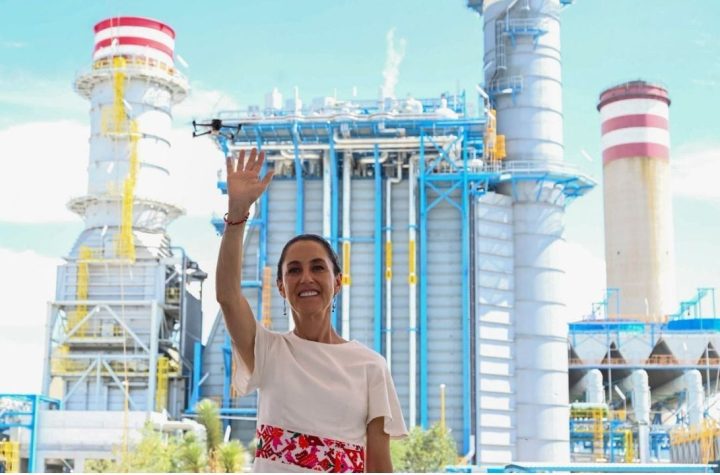
Mazda’s next MX-5 is set for a big change as the brand marches towards electrification, but ‘fun-to-drive’ character is a priority.

Mazda is expected to electrify its next-generation MX-5 roadster as it charges into a new era, but the brand still reckons its enduring sports car can deliver on fun and thrills.
Speaking to Drive at the launch of the updated 2024 MX-5, Mazda Australia’s head of marketing, Alastair Doak, said the brand is committed to delivering the ‘fun-to-drive’ ethos the convertible has been known for since 1989.
“The MX-5 sports car has been the heart and soul of Mazda – it is [still] the heart and soul of Mazda – so I know that everybody at MC (Mazda Corporation) headquarters is working towards making sure that anything into the future, whatever that will be … will be engaging, and lightweight, and as entertaining as possible,” he said.
“The joy of driving will be fundamental to any sports car that Mazda builds in the future.”

Having originally launched in 1989, the first-generation ‘NA’ MX-5 was produced until 1997 when it was replaced by the mechanically similar, but aesthetically revised, ‘NB’ series.
In 2005, an all-new ‘NC’ MX-5 was launched, which was criticised at the time for being larger and less raw than its predecessors.
Drive Marketplace: Cars for Sale
demo
2023 Mazda MX-5
2.0L Convertible RWD
demo
Good Price
2023 Mazda MX-5
RS 2.0L Coupe RWD Manual
demo
2024 Mazda MX-5
2.0L Convertible RWD
used
Good Price
2022 Mazda MX-5
RS 2.0L Coupe RWD Manual
used
2023 Mazda MX-5
2.0L Convertible RWD
new
2024 Mazda MX-5
2.0L Coupe RWD
However, Mazda course corrected in 2015 with the launch of the ‘ND’ after obsessively trimming weight and balancing performance with comfort.
And now the next-generation MX-5 could again pack on the kilos, as Mazda enters the second phase of its electrification rollout before its fully-electric cars are made available from 2028.
Speaking to media at last year’s Tokyo motor show, MX-5 program manager Shigeki Saito admitted that a full battery-electric model is an idea that is being explored, but a powertrain solution is yet to be finalised.

However, what Saito-san did reveal at the time is that the manual gearbox is likely to be discontinued as a casualty of electrification, though Mazda will push to try and keep the current ‘ND’ MX-5 for as long as possible if it meets with compliance and regulations.
Now in its ninth year of production and recently refreshed, the ‘ND’ looks likely to be the longest-running MX-5 generation yet, outliving the ‘NC’ – which was built for a decade.
Saito-san also said the ‘ND’ would play host to a number of special-edition versions to see it off as possibly the last purely-petrol-powered MX-5, though what they will look like is still unclear.
However, weight will be a critical factor for the next-generation MX-5, with Saito-san revealing Mazda is aiming to keep the four-stud wheel pattern in the new car in line with the ‘NA’, ‘NB’, and ‘ND’ cars.
The ‘NC’ moved to a five-stud pattern due to a circa-1100kg weight, according to Saito-san, whereas the rest of the MX-5 family tip the scales closer to 1000kg.
It’s worth noting the current Mazda 2 rides on four-stud wheels, with all automatic versions eclipsing 1100kg, so the NC’s five-stud setup is likely more related to its need to share suspension components with the heavier RX-8 at the time.

So, what could power the next-generation MX-5? The Iconic SP concept revealed in Japan could point the way.
Pairing a two-rotor engine with an electric motor and battery, the Iconic SP essentially uses a rotary range-extender set-up as seen in overseas versions of the MX-30 R-EV, but tuned to deliver a sizeable 272kW punch.
Mazda has since confirmed it will continue developing the rotary engine, a powertrain traditionally criticised for its fragility and high emissions/inefficiency, but when used as a range-extender could overcome its shortcomings.
The last mass-produced rotary engine was housed within the RX-8 that ran from 2003 to 2012, but is famous for powering the RX-7 (from which the Iconic SP borrows heavy styling cues), Le Mans-winning 787B race car and a series of iconic performance models from the ’60s and ’70s.
And though the MX-30 R-EV never made it to Australia, Mr Doak said the door is open for a future version of that powertrain to grace local showrooms.

“It’s great that the updated rotary has come back as a range extender,” he said.
“We didn’t take MX-30, we didn’t think the volume was there or the demand was there.
“If it’s available and all things [align] we’ll certainly consider it.”
Another puzzle piece to be revealed is whether Mazda can build an ostensibly all-new MX-5 on its own, or whether it will partner with another manufacturer to justify costs.
Toyota partnered with BMW to revive its Supra in 2019 and Subaru for the 86 in 2012, while Nissan’s new Z sports car reuses the same platform as the preceding 370Z (itself dating back to the 2003 350Z) and engine from discontinued-in-Australia Infiniti models.
The ‘ND’ MX-5 was also twinned with the Fiat/Abarth 124 Spider, with Mazda producing the Italian-branded cars from its factory in Hiroshima, but unlike the Mazda version, power for the 124 came from its partner’s 1.4-litre turbo-petrol four-cylinder engine.
Tung Nguyen has been in the automotive journalism industry for over a decade, cutting his teeth at various publications before finding himself at Drive in 2024. With experience in news, feature, review, and advice writing, as well as video presentation skills, Tung is a do-it-all content creator. Tung’s love of cars first started as a child watching Transformers on Saturday mornings, as well as countless hours on PlayStation’s Gran Turismo, meaning his dream car is a Nissan GT-R, with a Liberty Walk widebody kit, of course.





NOTICIAS DE ULTIMO MOMENTO:
Gentrificación en CDMX: ¿cuál es el plan de Sheinbaum para frenarla?
Gobierno de Puebla refuerza seguridad para viajeros en carreteras con modelo innovador
Sheinbaum inaugura moderna Central de Ciclo Combinado de CFE en Villa de Reyes, SLP